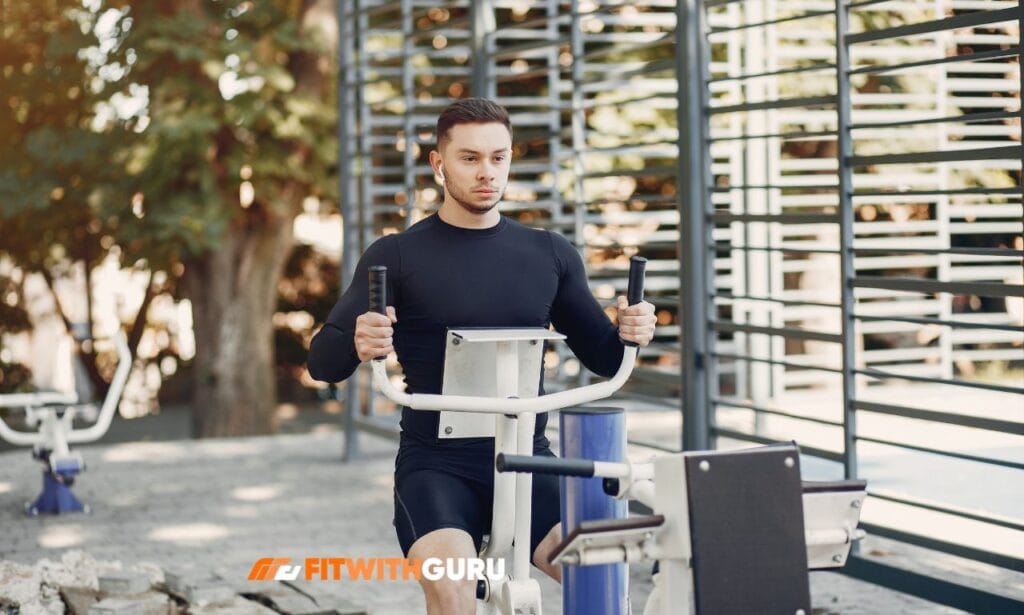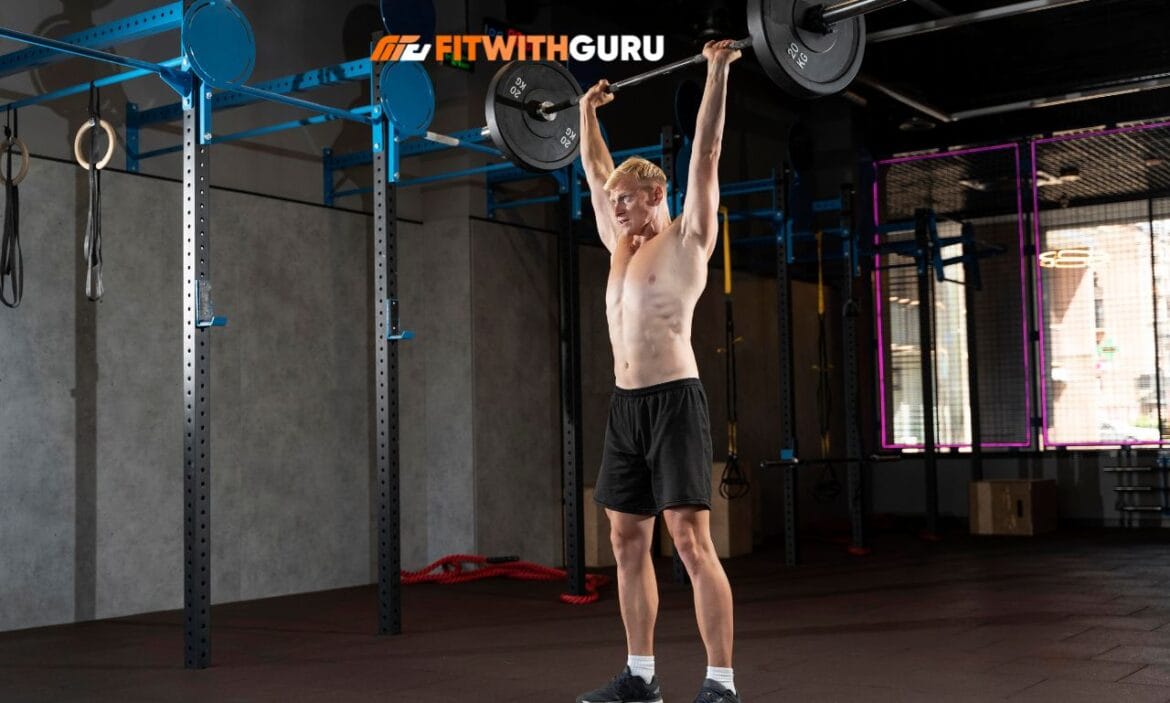Strength training for triathletes isn’t optional anymore; it’s a performance essential. If you want to go faster, last longer, and stay injury-free across swim, bike, and run, lifting weights needs to be part of your weekly schedule. Endurance alone won’t cut it.
Top pros and age-groupers alike are reaping the rewards of strength training for triathletes: improved power output, better running economy, enhanced muscle endurance, and faster recovery. Strength training is no longer just for bodybuilders—it’s for triathletes who want to unlock peak performance and stay competitive.
How Strength Training for Triathletes Improves Performance
One of the key benefits of strength training for triathletes is better muscle efficiency. Triathlon is about moving well under fatigue, and strength training improves neuromuscular coordination so your muscles fire faster and more effectively. This translates to smoother transitions, stronger pedal strokes, and a more explosive run off the bike.
Additionally, it is essential for preventing injuries. Most triathlete injuries stem from overuse, imbalances, or weak stabilizing muscles. Strength training for triathletes targets and fixes these issues, especially in commonly neglected areas like the glutes, hamstrings, and core.
On top of that, strength training enhances overall power and speed. Movements like squats, deadlifts, and plyometrics translate directly to stronger, faster performance in all three disciplines. This is how you make your gym work count when it’s time to race.
Tip #1: Make Strength Training for Triathletes Consistent, Not Occasional
The key to benefiting from strength training for triathletes is consistency. Hitting the gym once every couple of weeks won’t cut it.
Aim for two to three strength sessions per week during the offseason when volume is lower, and scale back to one or two maintenance sessions during race season. Integrating strength work regularly ensures long-term improvements and lasting performance gains.

Tip #2: Focus on Compound Movements Over Isolation
Isolation exercises might be popular in bodybuilding circles, but triathletes need functional, total-body strength. Focus your strength training on compound lifts like squats, deadlifts, pull-ups, Romanian deadlifts, and lunges.
These movements recruit multiple muscle groups, build stability, and transfer well to swimming, cycling, and running. Strength training like that is beneficial on the course.
Tip #3: Periodize Strength Training for Triathletes
Just like your swim-bike-run training has phases, strength training for triathletes should follow a periodized plan. Focus on building muscle endurance and resolving imbalances with lesser weights and more repetitions during the base phase.
In the build phase, shift to heavier loads and lower reps to develop maximum strength and power. As race season nears, reduce volume and focus on maintaining gains through explosive, short-duration exercises like plyometrics. This approach ensures you peak at the right time without burning out.
Tip #4: Strengthen the Posterior Chain
Many triathletes are quad-dominant, thanks to heavy time spent biking and running. But the real power comes from the posterior chain, the glutes, hamstrings, calves, and back. Strength training should include exercises that target these areas directly.
Hip thrusts, kettlebell swings, Romanian deadlifts, and reverse lunges are excellent choices to strengthen the posterior chain, prevent injury, and improve efficiency across all three sports.
Tip #5: Don’t Skip Core Work
The core is the foundation of every movement you make during a triathlon. From swim strokes to bike positioning to run stride, a strong core stabilizes your entire body and reduces energy leaks. Make core strength training a non-negotiable part of your plan.
Include exercises like planks, Pallof presses, Russian twists, and dead bugs. These movements train stability and rotational strength that translate directly to race-day performance.
Tip #6: Match Movements to Triathlon Demands
Functional training should be a focus in any strength program for triathletes. The best strength training mimics the movement patterns and demands of the sport.
For example, single-leg deadlifts improve running balance, step-ups simulate bike-to-run transitions, and cable chops build the rotational power used in swimming. Purposeful movement selection helps bridge the gap between gym sessions and race execution.
Tip #7: Respect Recovery in Strength Training for Triathletes
Recovery is critical, especially when you’re balancing high-volume endurance training with gym work. Avoid planning a long brick or interval exercise on the same day as an intense strength training session.
Give your body at least 48 hours to recover from heavy lifting before another intense session. Innovative strength training respects the stress load and ensures you’re adapting, not breaking down.
Tip #8: Lift Heavy—Yes, Even Endurance Athletes
There’s a common misperception that heavy lifting is bad for endurance athletes. The truth? Lifting heavy—three to six reps at 85–90% of your one-rep max—builds neural strength and muscle fiber recruitment.
This enhances running economy and bike power without adding unnecessary muscle mass. Heavy lifting is a cornerstone of practical strength training for triathletes.

Tip #9: Use Plyometrics to Build Speed and Elasticity
Plyometric training develops fast-twitch muscle fibers, which help triathletes generate quick bursts of speed during transitions, sprints, and final kicks. Add box jumps, skater hops, and jump lunges to your routine. Plyometric strength training builds elastic strength and sharpens your ability to accelerate when it counts most.
Tip #10: Integrate Mobility into Your Strength Routine
Strength without mobility leads to stiffness, poor form, and higher injury risk. Mobility should bookend every strength session. Focus on areas like the hips, ankles, and thoracic spine to maintain range of motion and joint health. Use dynamic warm-ups before lifting and targeted mobility work afterward to stay limber and ready to move well.
Tip #11: Monitor Progress with Specific Metrics
You track your splits and heart rate—why not your strength gains? Strength training for triathletes should be just as data-driven as your swim-bike-run sessions. Keep a log of sets, reps, time under tension, and even bar speed if using tools like velocity-based training. Keeping track of your development ensures you’re genuinely getting stronger and not just going through the motions.
Tip #12: Work with a Coach Who Understands Strength Training for Triathletes
Not all trainers understand the needs of triathletes. Avoid generic bodybuilding routines. Find a coach who knows how to program strength training for triathletes, balancing gym work with endurance volume. A good coach can tailor your strength plan around your race schedule, limit fatigue, and maximize return on time invested.

Sample Weekly Strength Training Plan for Triathletes
Here’s a sample in-season plan for intermediate triathletes who want to integrate strength training without overloading their schedule:
- Monday – Lower Body Strength: Squats, Romanian Deadlifts, Walking Lunges
- Wednesday – Core + Plyometrics: Russian Twists, Box Jumps, and Planks
- Friday – Upper Body + Mobility: Pull-ups, Cable Rows, Shoulder Mobility Work
Adjust load and duration based on fatigue, intensity of endurance sessions, and race calendar.
Top FAQs About Strength Training for Triathletes
How often should triathletes do strength training?
Most triathletes should aim for two to three sessions per week in the offseason, and one to two during the race season. Consistency over months leads to real results.
Will strength training make me too bulky for a triathlon?
No, not when it’s programmed correctly. Building lean, strong muscle is what strength training is all about, not size. You’ll get stronger without gaining unnecessary mass.
What are the best strength exercises for triathletes?
Stick with compound and functional movements. Deadlifts, squats, lunges, pull-ups, planks, and plyometrics all rank high for triathlon-specific strength.
When should I do strength training around my swim/bike/run sessions?
Ideally, schedule lifting after low-intensity cardio or on non-key days. Avoid heavy lifting the day before big workouts or races. Give yourself time to recover.
Can beginners start strength training right away?
Absolutely. Start with bodyweight movements, learn proper form, and progress gradually. Even simple strength training can lay a strong foundation for performance.
Conclusion
If you’re serious about getting faster, staying injury-free, and building a long-lasting triathlon career, strength training is a must. Working more efficiently is more important than putting in long hours at the gym.
From lifting heavy to correcting imbalances and improving mobility, these 12 strength training tips are designed to elevate your performance in every discipline. Make it a consistent part of your routine. Be intentional. Track your progress. Strength training for triathletes is your ticket to a stronger, faster, and more resilient version of yourself.

